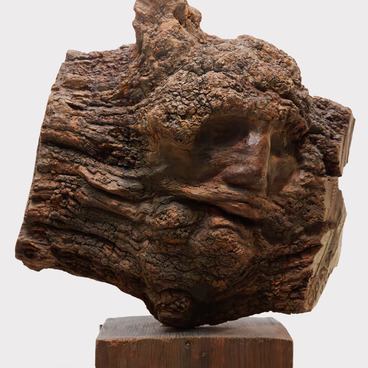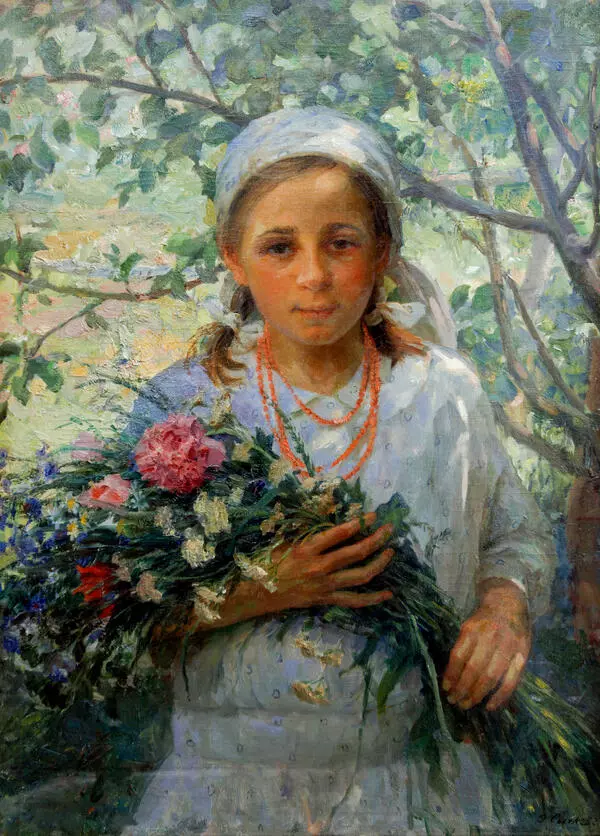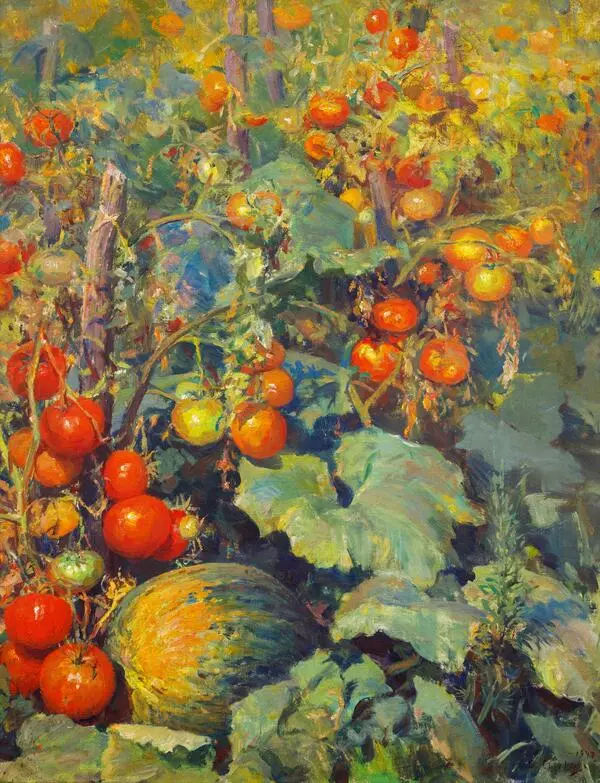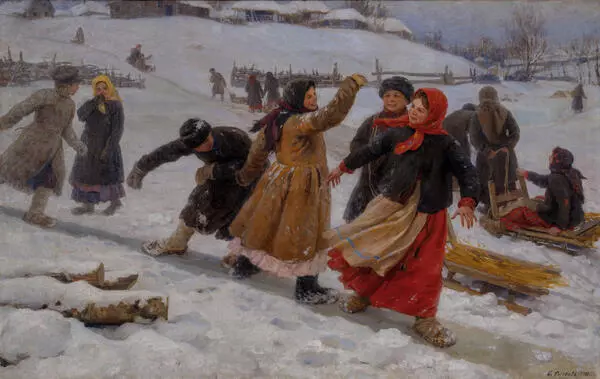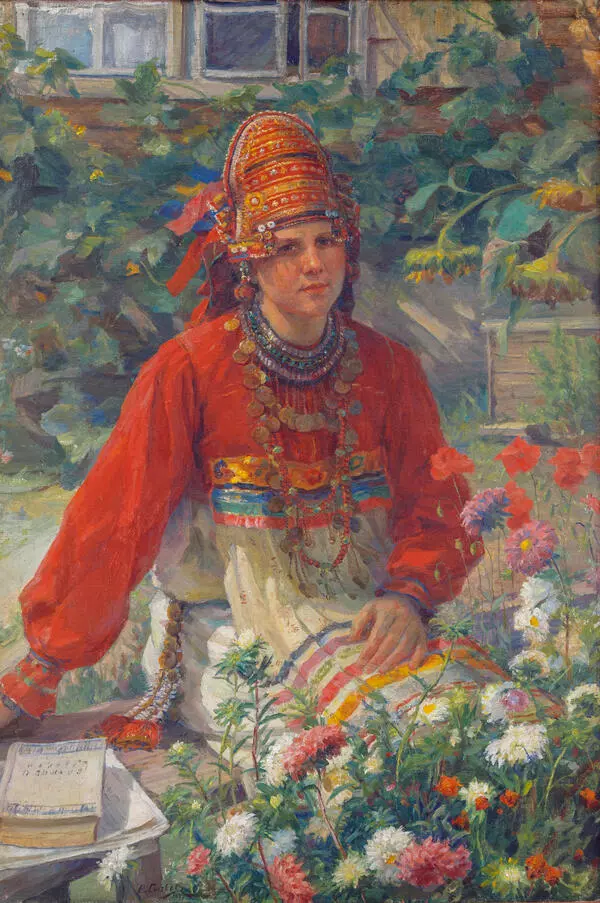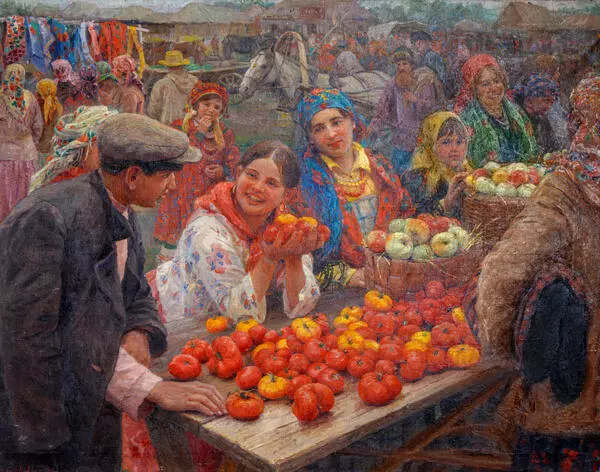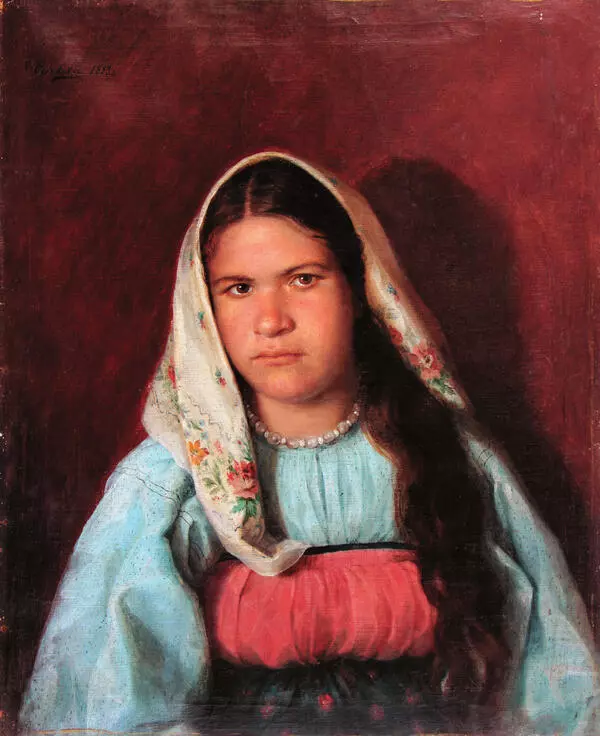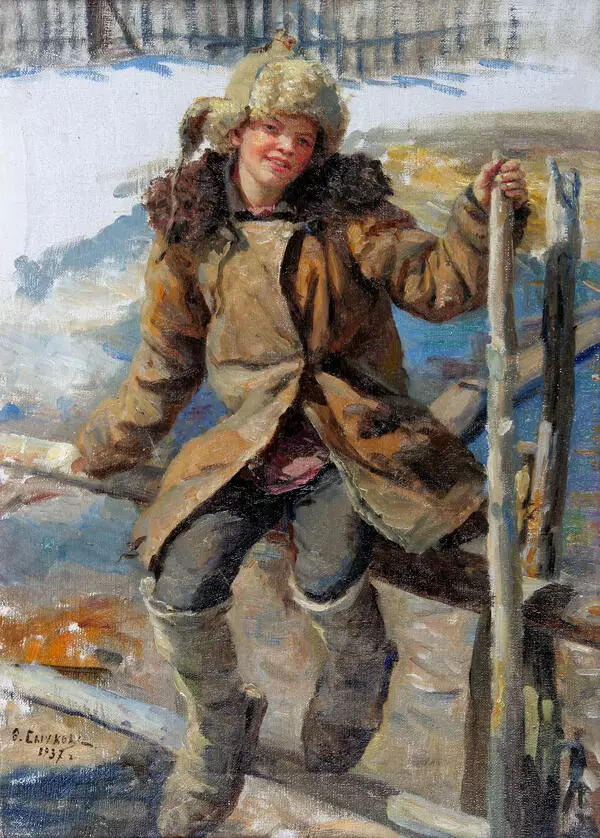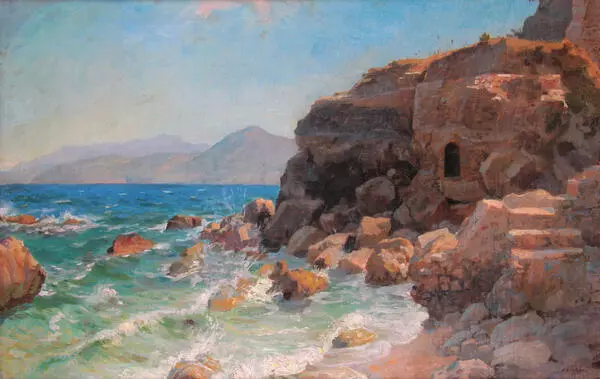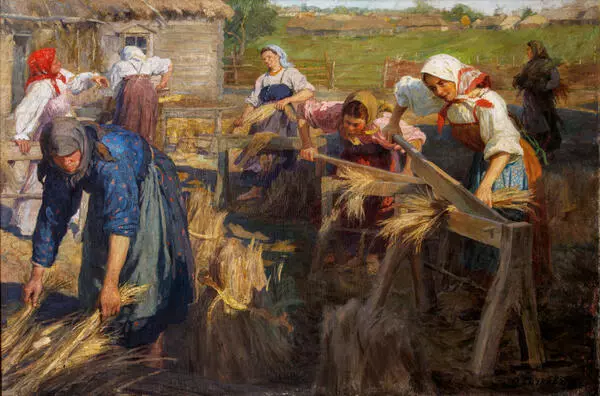Fedot Vasilyevich Sychkov was a famous Soviet and Russian artist. From his childhood he showed an aptitude for painting. He worked in an icon painting studio, painted frescoes in churches, and copied portraits from photographs. Fedot Sychkov graduated from the Drawing School and was a non-matriculated student at the Higher Art School at the Academy of Arts in St. Petersburg. After graduation he lived and worked in St. Petersburg (1900–1917). In 1917, the artist returned to his homeland in the village of Kochelayevo. The life of peasants was the main theme of his works.
Masha Fomenkova, a Russian girl, sat for the portrait “Straight-A Pupil”. The character is not wearing a school uniform, as was already common in the 1930s in urban schools, but a Moksha national costume with numerous neck and pectoral adornments made of coins and beads and an elaborate headdress. The national costume was specifically borrowed by the artist from the neighboring Mordovian village of Novoye Pshenevo. The girl is holding an open textbook in her hands. Her face, lit with a pure and bright smile, is welcoming to the viewer. Completing the image of a schoolgirl are the items of the interior — a geographical map, a school canvas bag on the wall, an inkpot, a pen with a quill and a pile of textbooks and notebooks on the table.
Maria Fomenkova recalled how the artist worked on the portrait. Fedot Vasilyevich invited her to sit only on sunny days, so that her face would be brightly lit, the silver coins and beads of her pectoral jewelry would shine, and not only the headdress pattern, but also the way it was done, was clearly visible. Respecting the artist’s work, the schoolgirl’s teachers even let her go from class for sitting sessions. Posing was not an easy job, especially for children, but she recalled how during a session the artist told her interesting stories, made her laugh, so she smiled and laughed all the time. Few artists were as good at painting a smile as Sychkov. He could do it like no one else, there was no trace of pretentiousness or artificiality on the faces of his little characters, they were surprisingly sincere and direct in expressing their feelings.
Masha Fomenkova, who lived next door to the Sychkovs, often helped the artist’s family, and they never missed a chance to return the favor. Maria Pavlovna left touching memoirs about the artist’s work on the paintings, about the relationship between the spouses and with the residents of Kochelayevo.
Masha Fomenkova, a Russian girl, sat for the portrait “Straight-A Pupil”. The character is not wearing a school uniform, as was already common in the 1930s in urban schools, but a Moksha national costume with numerous neck and pectoral adornments made of coins and beads and an elaborate headdress. The national costume was specifically borrowed by the artist from the neighboring Mordovian village of Novoye Pshenevo. The girl is holding an open textbook in her hands. Her face, lit with a pure and bright smile, is welcoming to the viewer. Completing the image of a schoolgirl are the items of the interior — a geographical map, a school canvas bag on the wall, an inkpot, a pen with a quill and a pile of textbooks and notebooks on the table.
Maria Fomenkova recalled how the artist worked on the portrait. Fedot Vasilyevich invited her to sit only on sunny days, so that her face would be brightly lit, the silver coins and beads of her pectoral jewelry would shine, and not only the headdress pattern, but also the way it was done, was clearly visible. Respecting the artist’s work, the schoolgirl’s teachers even let her go from class for sitting sessions. Posing was not an easy job, especially for children, but she recalled how during a session the artist told her interesting stories, made her laugh, so she smiled and laughed all the time. Few artists were as good at painting a smile as Sychkov. He could do it like no one else, there was no trace of pretentiousness or artificiality on the faces of his little characters, they were surprisingly sincere and direct in expressing their feelings.
Masha Fomenkova, who lived next door to the Sychkovs, often helped the artist’s family, and they never missed a chance to return the favor. Maria Pavlovna left touching memoirs about the artist’s work on the paintings, about the relationship between the spouses and with the residents of Kochelayevo.


